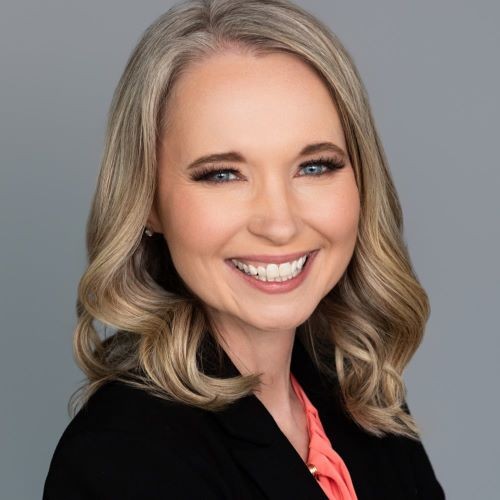Bates Research | 11-16-22
The New Federal Digital Asset Framework: Where Are We Now?

Since President Biden issued an Executive Order in March 2002 directing agencies to collaborate on a “whole of government approach” for ensuring the responsible development of digital assets, the market has been anticipating the release of the broader framework. As we noted in a previous post, the Executive Order was well received, in large measure because it laid out a high-level set of unobjectionable goals. Among them: consumer and investor protection, financial inclusion, mitigation of illicit finance and national security risks; consideration of a U.S. central bank digital currency ("CBDC"); and the promotion of technological innovation prioritizing “privacy, security, combating illicit exploitation, and reducing negative climate impacts.”
The Framework, issued on September 16, 2022, remains a high-level mix of broad directives by nine separate federal agencies which support these goals. Here are the highlights.
Illicit Finance
The Framework reinforces the current U.S. role in anti-money laundering in the “digital asset ecosystem” while acknowledging that “digital assets have facilitated the rise of ransomware cybercriminals; narcotics sales and money laundering for drug trafficking organizations; and the funding of activities of rogue regimes.”
The Framework would strengthen U.S. efforts to mitigate these risks by proposing that the President consider legislation amending the Bank Secrecy Act. The Framework names a few of these proposed amendments including (i) “anti-tip-off statutes, (ii) a law against, and increased penalties for, unlicensed money transmitting to apply explicitly to digital asset service providers—including digital asset exchanges and nonfungible token (NFT) platforms,” and (iii) allowing the Department of Justice “to prosecute digital asset crimes in any jurisdiction where a victim of those crimes is found.” The Framework commits Treasury to complete an illicit finance risk assessment on decentralized finance by the end of February 2023 and on non-fungible tokens by the end of July 2023. Further, Treasury committed to greater outreach to stakeholders (including through a Request for Comment) to encourage more feedback on combatting “anti-money laundering, terrorist financing; hacks that result in losses of funds; and fragilities, common practices, and fast-changing technology that may present vulnerabilities for misuse.”
U.S. Central Bank Digital Currency
The Framework continues the ongoing debate about the whether the Federal Reserve should issue a Central Bank Digital Currency (CBDC) and how. The Framework reiterates the potential advantages of a US CBDC including “enabling access for a broad set of consumers,” fostering “economic growth and stability, protect[ing] against cyber and operational risks, safeguard[ing] the privacy of sensitive data, and minimiz[ing] risks of illicit financial transactions.” The Framework moves forward with recommendations for additional research and development and “experimentation and evaluation.” In the Framework, Treasury committed to lead an interagency working group to further consider the implications of a US CBDC.
Protecting Investors
Strengthening disclosure and more aggressive and collaborative investigations and enforcement, particularly by the SEC, CFTC, and CFPB to combat fraud and scams are the primary recommendations to protect investors in cryptocurrencies. The Framework also encourages the FTC and CFPB to increase their efforts to monitor consumer complaints and share the data. Beyond that, the Framework recommends that regulators issue more guidance on emerging risks, and for the Financial Literacy Education Commission (FLEC) to lead efforts to raise public awareness of these risks.
Innovation
The regulators agreed to “foster” innovation in the digital asset market by committing to (i) offer regulatory guidance and assistance to technology entrepreneurs (through programs like tech sprints and Innovation hours), (ii) “kickstart fundamental research on topics such as next-generation cryptography, transaction programmability, cybersecurity and privacy protections, and ways to mitigate the environmental impacts of digital assets,” and (iii) work to inform, educate and train “diverse groups of stakeholders on safe and responsible digital asset use.” In addition, the DoE and EPA committed to track the environmental impacts of digital asset use, developing performance standards and “providing local authorities with the tools, resources, and expertise to mitigate environmental harms.” The Commerce Department offered to host stakeholder forums to allow for discussion on new federal regulation, standards, technical assistance and research.
Access to Financial Services
Without much detail, the Framework states that the President will consider “agency recommendations to create a federal framework to regulate nonbank payment providers.” Otherwise, the emphasis was placed on the development of instant payment systems including the coming launch of “FedNow,” a Federal Reserve Board effort to “enable financial institutions of every size, and in every community across the U.S., to provide safe and efficient instant payment services in real time.” The expectation is that payment providers would offer innovative technologies that will help to expand access. The Framework also encouraged more research in “technical and socio-technical disciplines and behavioral economics” to encourage accessibility.
Financial Stability
The Framework highlights that the Treasury Department will continue to help financial institutions “identify and mitigate cyber vulnerabilities,” share data, develop analytical tools, and collaborate with other agencies on tracking and analyzing digital asset market strategic risk.
Global Competitiveness
The Framework highlights the current work being done in international bodies (e.g., G7, G20, OECD, FSB, FATF, and the International Organization for Standardization) by the United States with respect to policies and regulation for digital assets. The Framework emphasizes the importance of U.S. values, namely “data privacy, free and efficient markets, financial stability, consumer protection, robust law enforcement, and environmental sustainability,” to the dialogue. The Framework states that the U.S., through the Departments of State, Treasury, and USAID, will further these values and offer technical assistance to help build out global “digital asset infrastructure and services.”
Conclusion
The Framework for regulating digital assets is very broad and reaffirms, in large part, what the agencies are already doing in the space. In that sense, the emphasis on more aggressive enforcement of existing rules is worth noting. Meanwhile, the new “whole of government approach” takes nothing off the table nor does it centralize oversight. In this regard, it does not provide the kind of direction that market participants have long called for.
Kicking the can further down the road, of course, presents its own risks. But perhaps—given current market conditions—the Framework prevented additional deleterious effects that more definitive directives might have provoked. That said, taking nothing off the table continues a pattern that does little to address longer-term digital asset development and the lack of regulatory certainty. The main takeaways are: more regulatory scrutiny based on existing rules and holdings, more uncertainty regarding future federal and state legislative mandates that are proceeding apace (notwithstanding this deliberative federal effort), and more potential enforcement jeopardy for firms.
Bates will continue to keep you apprised.
About Bates' MSB and Virtual Asset Services
Bates Group’s MSB, FinTech, and Virtual Assets practice offers guidance and services for Money Services Businesses and Non-Banking Financial institutions, fintech and cryptocurrency firms. Our crypto subject matter experts work directly with firms and counsel to design and implement policies to ensure they are AML-compliant. Our MSB and AML Teams help obtain and maintain Money Transmitter Licensing, and they also engage clients with BSA/AML/OFAC Program Development, Risk Management, Training, Advisory Services, and Independent Reviews.
